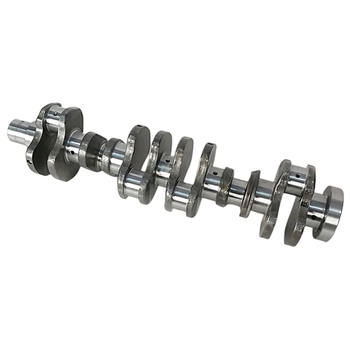The Heart of the Engine: Crankshafts and Their Metallurgy
Have you ever wondered what keeps your engine running smoothly? It's the crankshaft, a vital component that converts linear piston motion into rotational motion. But here's the thing: not all crankshafts are created equal. The secret to their performance lies in their metallurgy – specifically, the alloys used in their construction.Why Alloy Selection Matters
Choosing the right alloy for a crankshaft can mean the difference between a high-performing engine and one that fails prematurely. The alloy must be able to withstand immense stress and resist fatigue, corrosion, and wear. But how do you know which alloy is best for your specific application?
Common Crankshaft Alloys and Their Properties
Let's take a look at some common crankshaft alloys and their properties:
- Cast Iron: A low-cost option with good wear resistance but poor fatigue strength.
- Steel: Offers excellent fatigue strength, stiffness, and wear resistance. It's more expensive than cast iron but is often used in high-performance engines.
- Forged Steel: Even stronger and more durable than regular steel, making it ideal for racing and high-stress applications.
- Chrome-Molybdenum Steel (Chrome-Moly): Known for its high strength-to-weight ratio and resistance to deformation at high temperatures.
Factors to Consider When Choosing a Crankshaft Alloy
When selecting a crankshaft alloy, consider the following factors:
- Engine Type: Different engine types (e.g., gasoline, diesel) have different performance requirements and operating conditions.
- Operating Conditions: Consider factors such as load, speed, and temperature, which can affect the alloy's performance and lifespan.
- Cost: Balance performance needs with budget constraints – remember, the most expensive option isn't always necessary.
Practical Applications: Choosing the Right Alloy for Your Engine
Here are some tips to help you choose the right crankshaft alloy for your specific application:
- Consult your engine's manufacturer guidelines or consult with an experienced engine builder.
- Consider the engine's intended use (e.g., daily driving, racing, off-roading) and select an alloy that can handle the expected stresses and conditions.
- Don't skimp on quality – investing in a high-quality crankshaft alloy can save you money and headaches in the long run.
Conclusion: The Power of Crankshaft Metallurgy
Understanding crankshaft metallurgy and alloy selection is crucial for optimizing engine performance and ensuring longevity. By considering factors such as engine type, operating conditions, and cost, you can make an informed decision about the best crankshaft alloy for your specific application. So, the next time you're working on an engine, remember: the right alloy can make all the difference.
Next Steps: Putting Your Knowledge into Action
Now that you understand the importance of crankshaft metallurgy and alloy selection, here are some next steps you can take:
- Review your current engine's specifications and identify areas for improvement.
- Research different alloys and engage with engine building communities to gather insights and advice.
- Consult with experts or attend workshops to deepen your knowledge of crankshaft metallurgy and alloy selection.
As you dive deeper into the world of crankshaft alloys, you'll be better equipped to make informed decisions that enhance your engine's performance and reliability. Happy engine building!




